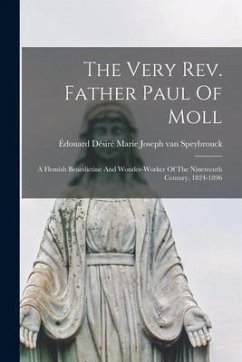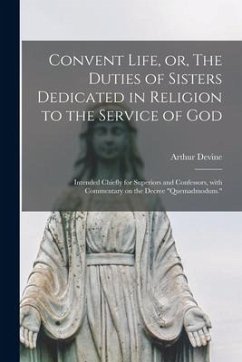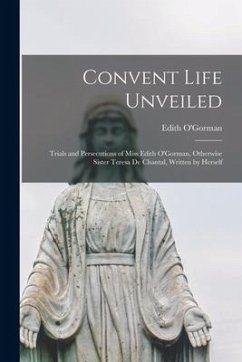
Convent Life And England In The 19th Century, 2 Sermons

PAYBACK Punkte
7 °P sammeln!
This volume presents two sermons by Peter Gallwey offering insights into convent life in 19th-century England. The sermons provide a window into the religious and social landscape of the time, reflecting on the spiritual calling and daily existence of women within the Catholic Church. Gallwey's addresses offer historical context and religious perspectives relevant to understanding the role of convents in Victorian society. These sermons serve as valuable primary source material for those interested in religious history and the experience of Catholic communities in England. This work has been s...
This volume presents two sermons by Peter Gallwey offering insights into convent life in 19th-century England. The sermons provide a window into the religious and social landscape of the time, reflecting on the spiritual calling and daily existence of women within the Catholic Church. Gallwey's addresses offer historical context and religious perspectives relevant to understanding the role of convents in Victorian society. These sermons serve as valuable primary source material for those interested in religious history and the experience of Catholic communities in England. This work has been selected by scholars as being culturally important, and is part of the knowledge base of civilization as we know it. This work was reproduced from the original artifact, and remains as true to the original work as possible. Therefore, you will see the original copyright references, library stamps (as most of these works have been housed in our most important libraries around the world), and other notations in the work. This work is in the public domain in the United States of America, and possibly other nations. Within the United States, you may freely copy and distribute this work, as no entity (individual or corporate) has a copyright on the body of the work. As a reproduction of a historical artifact, this work may contain missing or blurred pages, poor pictures, errant marks, etc. Scholars believe, and we concur, that this work is important enough to be preserved, reproduced, and made generally available to the public. We appreciate your support of the preservation process, and thank you for being an important part of keeping this knowledge alive and relevant.





![Romanism [microform]: Political and Religious, in the 9th and 10th Decades of the 19th Century Cover Romanism [microform]: Political and Religious, in the 9th and 10th Decades of the 19th Century](https://bilder.buecher.de/produkte/65/65502/65502376n.jpg)

![Supplement to Six Months in a Convent [microform]: Confirming the Narrative of Rebecca Theresa Reed, by the Testimony of More Than One Hundred Witness Cover Supplement to Six Months in a Convent [microform]: Confirming the Narrative of Rebecca Theresa Reed, by the Testimony of More Than One Hundred Witness](https://bilder.buecher.de/produkte/65/65574/65574864n.jpg)




![The Awful Disclosures of Maria Monk. And The Mysteries of a Convent [microform] Cover The Awful Disclosures of Maria Monk. And The Mysteries of a Convent [microform]](https://bilder.buecher.de/produkte/64/64531/64531965n.jpg)